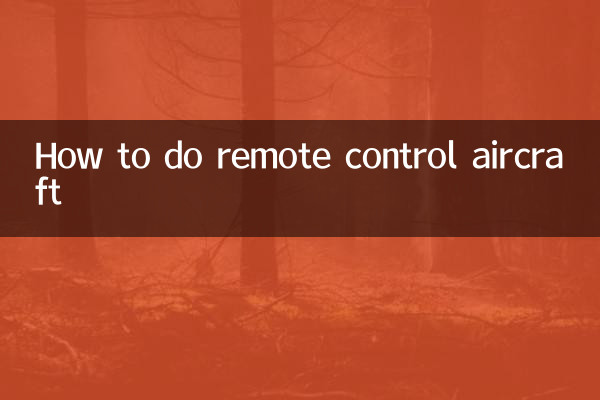How to do remote control aircraft
In recent years, remote-controlled aircraft (drone) have become a hot topic for their entertainment and practicality. Whether it is aerial photography enthusiast, tech enthusiast or ordinary players, they are all interested in how to make or operate remote-controlled aircraft. The following is a collection of hot content on remote-controlled aircraft across the network in the past 10 days, and provides you with a detailed guide based on structured data.
1. Check out the hot topics

| topic | Popularity index | Main discussion content |
|---|---|---|
| DIY homemade remote control aircraft | ★★★★★ | Material selection, circuit design, flight testing |
| Drone aerial photography skills | ★★★★☆ | Composition method, weather impact, post-processing |
| Remote-controlled aircraft regulations | ★★★☆☆ | Flight restricted areas, registration requirements, privacy issues |
| Recommended children's remote control aircraft | ★★★☆☆ | Safety, operation difficulty, price range |
2. Steps for making remote control aircraft
If you want to make a simple remote control aircraft yourself, you can follow these steps:
| step | Required materials | Things to note |
|---|---|---|
| 1. Design the body | Light wood/foam board, ruler, art knife | Need to ensure left and right symmetry, center of gravity |
| 2. Install the power system | Motor, propeller, lithium battery | Pay attention to the motor steering matching the propeller |
| 3. Assembly of the control system | Receiver, servo, remote control | Check signal connection stability before testing |
| 4. Debug flight | Open field, wind measuring instrument | Recommended for low-altitude short-range test for the first flight |
3. Latest remote control aircraft technology trends
According to recent technology media reports, the field of remote-controlled aircraft has shown the following development trends:
1.AI intelligent obstacle avoidance: The new generation of consumer-grade drones are generally equipped with multi-directional sensors, which can automatically identify obstacles and plan routes.
2.Long-term battery life breakthrough: The application of hydrogen fuel cell technology has enabled some industrial drones to last more than 3 hours.
3.Gesture control: Through computer vision technology, somatosensory operation without a remote control is achieved, greatly reducing the learning threshold.
4. Safety flight instructions
| Dangerous behavior | The correct way to do it | Legal basis |
|---|---|---|
| Flying over the crowd | Maintain a safe distance of more than 30 meters | "Regulations on Safety Management of Civil Unmanned Aircraft Systems" |
| Flying near the airport | Strictly abide by the regulations on the no-fly zone | "Regulations on the Management of Airport Clearance Protection Areas" |
| Night flight | The sailing light must be turned on | General Aviation Flight Control Ordinance |
5. Purchase suggestions
For beginners, the following elements are recommended:
1.Price range: Entry-level remote-controlled aircraft (300-800 yuan) can meet basic flight needs.
2.Protective design: It is safer to choose a model with propeller guards.
3.Control mode: Models with "one-click take-off and landing" and "auto-hovering" functions are easier to use.
4.After-sales service: Priority is given to brands that provide part replacement and flight guidance.
Conclusion
Making and operating remote-controlled aircraft is both a technical and artistic job. With the advancement of technology, remote-controlled aircraft on the market are becoming more and more intelligent and humanized. Whether you choose DIY or buy finished products directly, keep in mind the principle of safety first. It is recommended that novices practice basic operations on the simulator first, and then gradually try to fly the actual aircraft. We look forward to you to take wonderful aerial photography while enjoying the fun of flying!

check the details

check the details